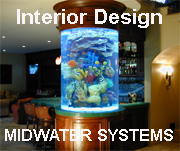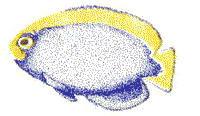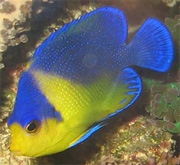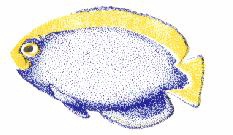|
Introduction by Steve Tyree
Small Polyped Stony ( SPS ) corals , that harbor
symbiotic zooxanthellae algae, are beginning to proliferate in many captive
reef systems around the world. These corals, along with coralline algae
have been referred to as the builders of natural reefs. They are also beginning
to build living reef structures in captivity. Amoung the coral species
commonly kept are Acropora (staghorn), Pocillopora, Stylophora, Seriatopora
and many others.
Hybrid Berlin Systems seems to be the best captive
support design used in the states presently. A few advanced reef-keepers
have begun to achieve natural growth rates in their properly maintained
captive systems. Many of these corals will still need to adapt to the captive
reef enviroment. These adaptations are complex and confusing but can eventually
be understood. The adaptations even have direct relations to observations
of stony coral changes that are occurring on natural reef ecosystems.
Many of the small polyped stonies are being proliferated
via fragmentation. In fact, it is currently possible to stock a new reef
with small fragmentations from other captive reefs and achieve a reef full
of stony coral colonies in a year or two. There has been some recent coral
sexual spawnings in the most advanced reef aquariums. many of the reefkeepers
who are maintaining these systems are utilizing spawning induction techniques
to more naturally simulate the corals wild enviroment. Even with all the
success that the advanced aquarist are having, it is still difficult for
an aquarist new to small polyped stonies, to be able to proliferate these
corals in captivity. Hopefully, the techniques currently employed will
be made available to the main body of reefkeepers. Some new books are beginning
to document this information but new advances are proceeding at an accelerated
pace.
SPS
Frag Identification and Growth Sequences
Basic
Staghorn Coral Information
|











